Abandoned History: The Life and Times of Edsel, a Ford Alternative by Ford (Part X)
It’s time for more Abandoned History, where the topic is Edsel and the year is 1960. It was to be the final outing of the Ranger, and the last year of Edsel as an entity. The Ranger had an interesting journey over its short three-year tenure and served as Edsel’s entry-level car in 1958, its mid-level sedan in 1959, and finally as its only sedan offering for 1960. Each of those years saw different styling appear on the Ranger, as Ford tried desperately to save the Edsel brand after its disastrous debut outing in 1958. Even though the Ranger was new in 1958 and heavily revised in 1959, it was all-new in 1960.
Abandoned History: The Life and Times of Edsel, a Ford Alternative by Ford (Part IX)
We return to our Edsel coverage today during the second model year of the company’s entry-level car, the Ranger. When it debuted amongst the six other Edsel models in 1958 it was the cheapest and the least ornamented of them all. However, it was still more expensive than the nicer Fairlane 500 upon which it was based, and indeed priced similarly to a more upscale Mercury, the Medalist.
Abandoned History: The Life and Times of Edsel, a Ford Alternative by Ford (Part VIII)
Edsel’s first year in 1958 proved very disappointing for the folks at Ford. The company’s unusual styling didn’t click with consumers, there was a sudden recession, and the average American consumer realized they didn’t have to buy a brand new car every year or two. And so it was that Edsel’s seven-model portfolio was reduced to just three for 1959. Leading the charge was the most successful (and cheapest) Edsel, the Ranger. It turned out that for Edsel buyers of 1958, less was more.
Abandoned History: The Life and Times of Edsel, a Ford Alternative by Ford (Part VII)
Thus far in our Abandoned History coverage of Edsel, we’ve made our way through four of the company’s seven models, specifically the ones offered in its introductory year of 1958. Pacer and Citation were sedans that received the immediate ax, while the Roundup and Bermuda were wagon cancellations.
Abandoned History: The Life and Times of Edsel, a Ford Alternative by Ford (Part VI)
We return to our Edsel coverage with the company’s fourth and final launch year model that was canceled immediately. In case you need a refresher, Edsel debuted in 1958 with a seven-car lineup. Four models were sedan-based (with accompanying body variations), while three were wagons.
The sedan models that never made it past 1958 included the lower-mid level Pacer, and the flagship Citation. Immediate wagon cancellations were the base model Roundup, and Edsel’s flagship wagon, the Bermuda.
Abandoned History: The Life and Times of Edsel, a Ford Alternative by Ford (Part V)
Thus far in Abandoned History’s coverage of Edsel, we’ve learned about the brand’s introduction to the American consumer, and the immediate confusion its pricing caused. As far as product, thus far we’ve covered two of the four single-year Edsel models: Pacer and Citation. While those two models were sedans, there were also two Edsel wagons that bit the dust after one year. Meet the Roundup.
Abandoned History: The Life and Times of Edsel, a Ford Alternative by Ford (Part IV)
In our last edition of Abandoned History, we found ourselves in the earliest days of Edsel sales in 1958. The new company offered a full lineup of four sedan-based models and three different wagons. But because Edsel failed so spectacularly, 1958 was the only year it had a broad product offering. Four of seven models were eliminated before the company’s second model year.
Last time we covered the cheapest of the one-offs, the Pacer. Its near entry-level status confused customers as it wasn’t exactly a cheap vehicle at $2,700 ($27,973 adj.) before options like a heater or radio. Pacer was also based on a Ford, but priced more like a Mercury. Still, the Pacer found 19,057 customers in its only year; many more than the upmarket Citation found during its outing.
Abandoned History: The Life and Times of Edsel, a Ford Alternative by Ford (Part III)
Ford conducted a lot of marketing research for its Edsel brand and was assured by many well-educated MBA types that its new lineup would be hugely successful. The research scientists said the unique styling and features Edsel offered would appeal to a broad cross-section of the American populace. After a television musical debut in the fall of 1957, Edsels were shipped to dealers where they remained under wraps until it was time for the ‘58 model year.
Crazy styling aside, Edsel’s arrival caused some immediate brand confusion in relation to Mercury, and in more limited circumstances, Ford. Much of said confusion occurred in the company’s debut year when Edsel spread the “lots of new models” sauce a little too thin. We start at the brand’s second most basic offering: Pacer.
Abandoned History: The Life and Times of Edsel, a Ford Alternative by Ford (Part II)
Ford successfully orchestrated a splashy live television musical debut for its new brand Edsel in the fall of 1957. The program was a culmination of a multi-year project to establish a new division of Ford that would compete more directly with the likes of Oldsmobile, Buick, and DeSoto. Edsels promised to be notably different from the Mercury with which it shared most everything except styling.
Edsel was to be much more value-conscious than the new-for-’58 unibody Lincolns, which sought to move the brand upmarket after the almost instantaneous discontinuation of the Continental Division. After Frank Sinatra and Bing Crosby ushered in the Edsel name it was time to show off the all-new models in showrooms, and introduce a supposedly excited American consumer to the lineup.
Abandoned History: The Life and Times of Edsel, a Ford Alternative by Ford (Part I)
Edsel received an honorary mention a couple of weeks ago, in our current Rare Rides Icons series on the Lincoln Mark cars. Then it was mentioned again the other day in Abandoned History’s coverage of the Cruise-O-Matic transmissions. It’s a sign. We need to talk about Edsel.



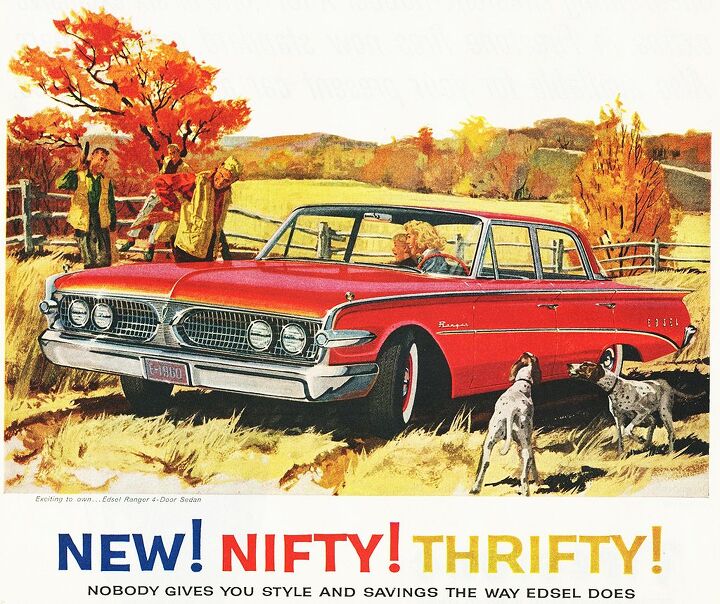

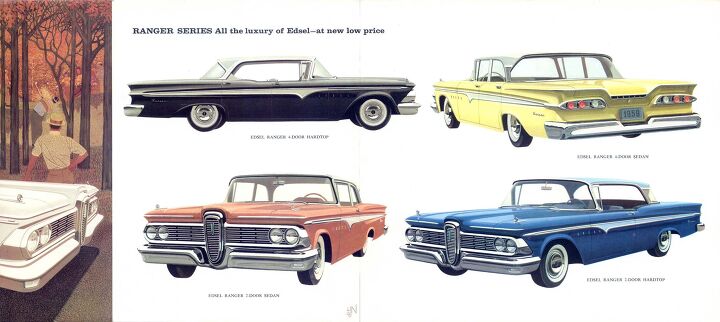

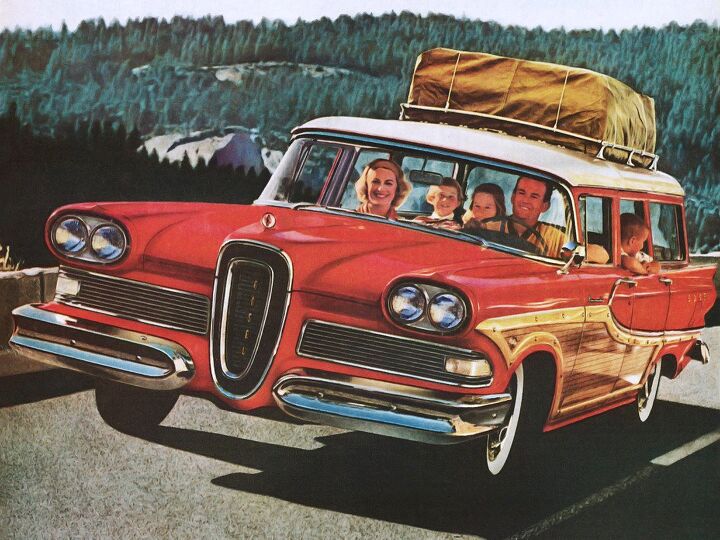



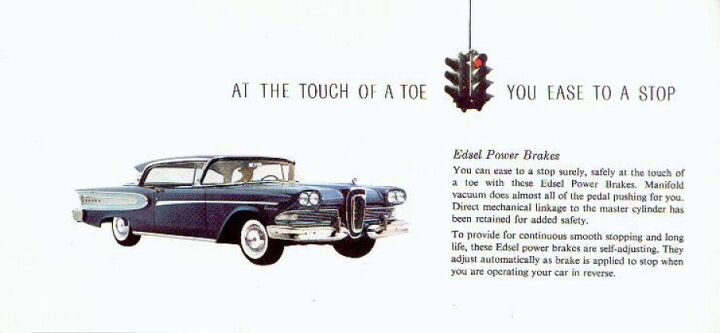
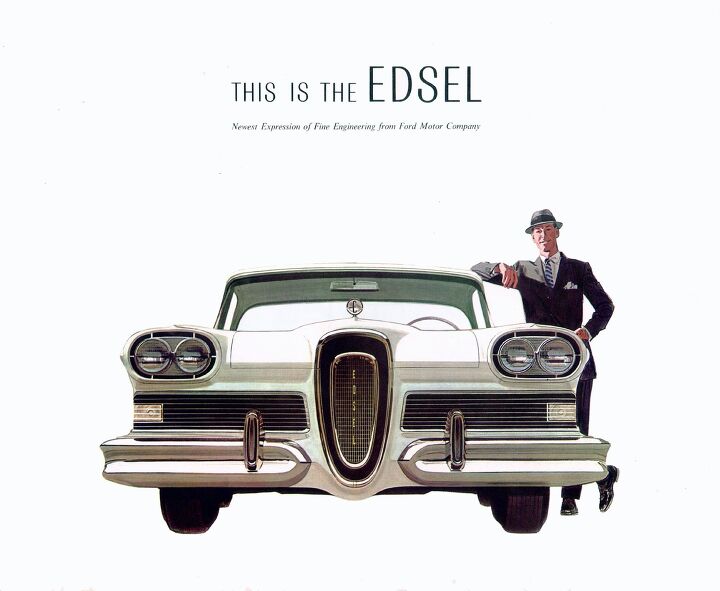












Recent Comments